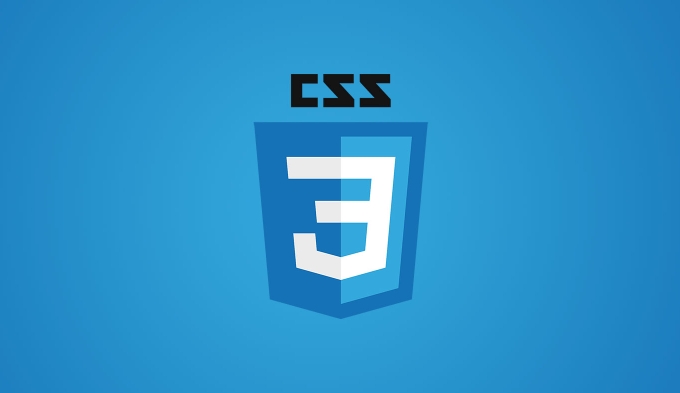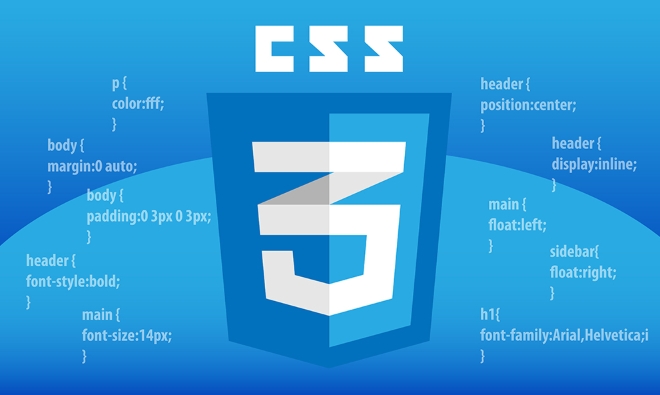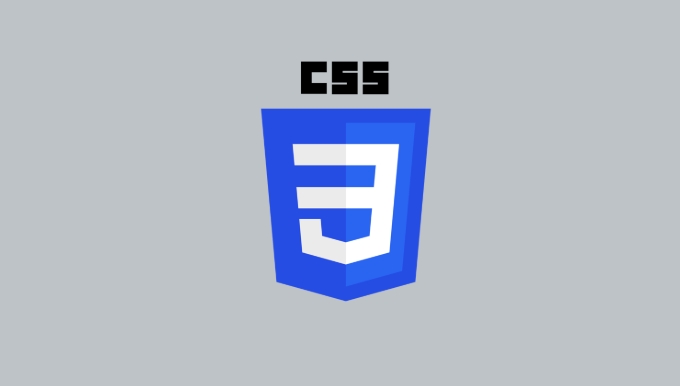To make CSS animation smooth, you need to select the right properties, control the rhythm, and reduce rearrangement and redrawing. 1. Priority is given to using high-performance attributes such as transform and opacity to avoid frequent triggering of re-arranged width and height; 2. Reasonably set the transition time (0.2s~0.5s) and functions, such as ease-in-out or custom cubic-bezier curves; 3. Avoid layout jitter in JS, use requestAnimationFrame instead or hand it over to CSS for processing; 4. Appropriately enable hardware acceleration, such as translateZ(0), but use will-change with caution to avoid excessive memory.

CSS transitions and animations are important tools to improve the web interactive experience, but to do it "smooth" does not just add a transition: all 0.3s . The key is to understand their working mechanism and optimize them according to actual scenarios.

Use the correct properties
Not all CSS properties are suitable for animation. Some properties frequently trigger publishing or drawing operations when changing, resulting in lag. For example, width and height changes may cause reflow, while opacity and transform almost only involve synthesizer-level operations, with better performance.

Recommended priority attributes:
-
opacity -
transform(such as translate, scale, rotate) -
filter(some browsers support better)
If you have to move the layout-related attributes, it is best to control the frequency and range, or consider using will-change or translateZ to tell the browser in advance that this element may move.

Control transition time and functions
The default ease function is actually good, but many times we still need to adjust the time curve according to the specific effect to make the animation look more natural.
Some common suggestions:
- Fast in and slow out:
cubic-bezier(0.25, 0.1, 0.25, 1)(this is the default) - Simple and fast:
ease-in-outorcubic-bezier(0.4, 0, 0.2, 1) - If you are more flexible, try
cubic-bezier(0.68, -0.55, 0.27, 1.55)
In terms of time, it is generally recommended to be between 0.2s and 0.5s . It is too short and has no feeling, and it is too long and procrastinating. Of course, complex animation effects may require combining different durations to create a sense of rhythm.
Avoid forced synchronous layouts and frequent redrawing
A common problem is that we frequently modify styles in JS, causing the browser to constantly recalculate the layout. For example:
element.style.left = '10px'; console.log(element.offsetTop); // Force synchronous layout! element.style.left = '20px';
This can cause "layout thrashing" to severely slow down the page. If you want to do complex animations, it is best to use requestAnimationFrame or simply leave it to CSS to handle it.
In addition, try to avoid modifying properties that will cause redrawing in the animation, such as box-shadow or border-radius , unless you are sure that performance is OK.
Rational use of hardware acceleration
Modern browsers automatically enable GPU acceleration for certain CSS operations, such as transform and opacity . But we can also actively trigger it through some tricks:
- Add
transform: translateZ(0)orwill-change: transformto the element - Especially useful for mobile devices, because GPUs perform better on mobile devices
But don't abuse will-change , it will take up extra memory and is not a universal accelerator. Use only if you know clearly that an element is about to change frequently.
Basically that's it. CSS animation is not complicated, but there are many details, so it will get stuck if you are not careful. The key is to select the right attributes, control the rhythm, reduce rearrangement and redrawing, and the rest is to debug more and see the smoothness.
The above is the detailed content of Creating smooth CSS transitions and animations. For more information, please follow other related articles on the PHP Chinese website!

Hot AI Tools

Undress AI Tool
Undress images for free

Undresser.AI Undress
AI-powered app for creating realistic nude photos

AI Clothes Remover
Online AI tool for removing clothes from photos.

Clothoff.io
AI clothes remover

Video Face Swap
Swap faces in any video effortlessly with our completely free AI face swap tool!

Hot Article

Hot Tools

Notepad++7.3.1
Easy-to-use and free code editor

SublimeText3 Chinese version
Chinese version, very easy to use

Zend Studio 13.0.1
Powerful PHP integrated development environment

Dreamweaver CS6
Visual web development tools

SublimeText3 Mac version
God-level code editing software (SublimeText3)

Hot Topics
 How can I include CSS only on some pages?
Jun 11, 2025 am 12:01 AM
How can I include CSS only on some pages?
Jun 11, 2025 am 12:01 AM
There are three ways to selectively include CSS on a specific page: 1. Inline CSS, suitable for pages that are not frequently accessed or require unique styles; 2. Load external CSS files using JavaScript conditions, suitable for situations where flexibility is required; 3. Containment on the server side, suitable for scenarios using server-side languages. This approach can optimize website performance and maintainability, but requires balance of modularity and performance.
 Flexbox vs Grid: Understanding the Key Differences in CSS Layout
Jun 10, 2025 am 12:03 AM
Flexbox vs Grid: Understanding the Key Differences in CSS Layout
Jun 10, 2025 am 12:03 AM
Flexboxisidealforone-dimensionallayouts,whileGridsuitstwo-dimensional,complexlayouts.UseFlexboxforaligningitemsinasingleaxisandGridforprecisecontroloverrowsandcolumnsinintricatedesigns.
 Creating an Auto-Closing Notification With an HTML Popover
Jun 10, 2025 am 09:45 AM
Creating an Auto-Closing Notification With an HTML Popover
Jun 10, 2025 am 09:45 AM
The HTML popover attribute transforms elements into top-layer elements that can be opened and closed with a button or JavaScript. Popovers can be dismissed a number of ways, but there is no option to auto-close them. Preethi has a technique you can u
 What is 'render-blocking CSS'?
Jun 24, 2025 am 12:42 AM
What is 'render-blocking CSS'?
Jun 24, 2025 am 12:42 AM
CSS blocks page rendering because browsers view inline and external CSS as key resources by default, especially with imported stylesheets, header large amounts of inline CSS, and unoptimized media query styles. 1. Extract critical CSS and embed it into HTML; 2. Delay loading non-critical CSS through JavaScript; 3. Use media attributes to optimize loading such as print styles; 4. Compress and merge CSS to reduce requests. It is recommended to use tools to extract key CSS, combine rel="preload" asynchronous loading, and use media delayed loading reasonably to avoid excessive splitting and complex script control.
 How to use Lotties in Figma
Jun 14, 2025 am 10:17 AM
How to use Lotties in Figma
Jun 14, 2025 am 10:17 AM
In the following tutorial, I will show you how to create Lottie animations in Figma. We'll use two colorful designs to exmplify how you can animate in Figma, and then I'll show you how to go from Figma to Lottie animations. All you need is a free Fig
 Breaking Boundaries: Building a Tangram Puzzle With (S)CSS
Jun 13, 2025 am 11:33 AM
Breaking Boundaries: Building a Tangram Puzzle With (S)CSS
Jun 13, 2025 am 11:33 AM
We put it to the test and it turns out Sass can replace JavaScript, at least when it comes to low-level logic and puzzle behavior. With nothing but maps, mixins, functions, and a whole lot of math, we managed to bring our Tangram puzzle to life, no J
 External vs. Internal CSS: What's the Best Approach?
Jun 20, 2025 am 12:45 AM
External vs. Internal CSS: What's the Best Approach?
Jun 20, 2025 am 12:45 AM
ThebestapproachforCSSdependsontheproject'sspecificneeds.Forlargerprojects,externalCSSisbetterduetomaintainabilityandreusability;forsmallerprojectsorsingle-pageapplications,internalCSSmightbemoresuitable.It'scrucialtobalanceprojectsize,performanceneed
 Does my CSS must be on lower case?
Jun 19, 2025 am 12:29 AM
Does my CSS must be on lower case?
Jun 19, 2025 am 12:29 AM
No,CSSdoesnothavetobeinlowercase.However,usinglowercaseisrecommendedfor:1)Consistencyandreadability,2)Avoidingerrorsinrelatedtechnologies,3)Potentialperformancebenefits,and4)Improvedcollaborationwithinteams.






